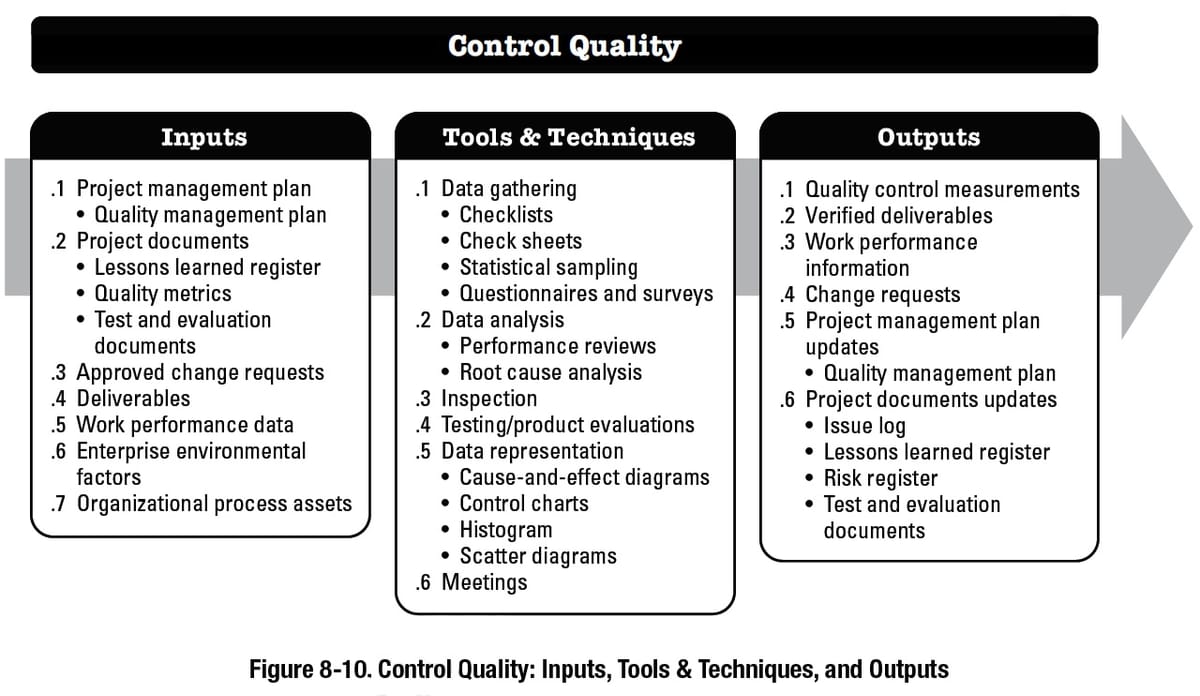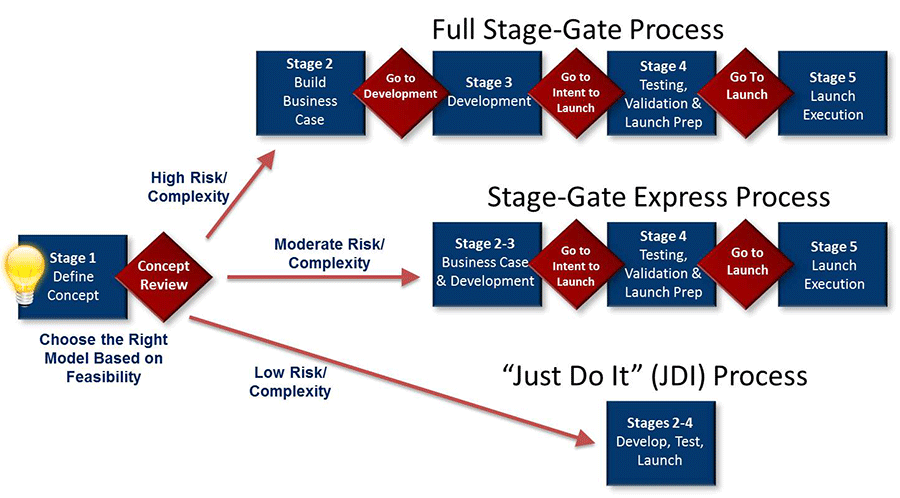Introduction
The quality of residential construction in Australia has become a significant concern for home owners. Defects, non-compliance with Australian Standards, and poor oversight have led to rising costs and frustrations for those who should be able to trust the process of building their homes.
Despite existing regulations, gaps in oversight and accountability mean that builders, trades, and consultants often operate without adequate consequences for poor quality work.
This article aims to address the question: when is enough, enough? We'll explore why the current regulatory framework isn't working and propose practical solutions to improve construction quality.
By adopting Inspection and Test Plans (ITPs) as a mandatory part of the residential building process and introducing a demerit point system for builders, trades, and consultants, we believe the industry can be held accountable to a higher standard.
Ultimately, this isn't about slowing down construction—it's about rebuilding trust and ensuring the quality of Australian homes. Let’s take a closer look at the issues, the potential solutions, and why home owners deserve better.
The Need for Accountability: Understanding Construction Defects
Residential construction in Oz is plagued by quality issues that often leave home owners bearing the brunt of the consequences. Defects in construction can range from minor issues, such as popped nails and cornice cracking, to major structural faults that can affect the safety and longevity of a home.
Unfortunately, many of these defects stem from inadequate quality control and poor oversight during the construction process.
One of the main reasons these defects persist is the lack of accountability for builders, tradespeople, and consultants involved in residential projects.
Without stringent oversight or repercussions, there is little incentive for industry participants to ensure high-quality work.
The National Construction Code (NCC) and Australian Standards are in place to dictate the quality and safety requirements for residential buildings, but compliance is inconsistent, and enforcement is weak.
For home owners, this can lead to unexpected costs and a drawn-out process of dispute resolution. Many find themselves in a position where they need to hire independent inspectors, consultants, or even lawyers to advocate for the quality that should have been provided in the first place. This burden falls disproportionately on consumers, who are often left with no choice but to accept subpar work or embark on costly (emotionally and financially) and time consuming legal battles to rectify defects.
The key to solving this issue lies in improving accountability across all parties involved in residential construction. Home owners deserve a system that ensures defects are minimised and those responsible for poor-quality work face consequences that encourage compliance.
A more robust framework for oversight is needed—one that includes practical solutions like ITPs and a demerit point system, which can help enforce quality standards effectively.
Common Residential Construction Defects and Their Impact
To fully understand why accountability is required, it’s important to know some of the common defects encountered in residential construction. These issues include:
- Waterproofing Failures: Incorrect or incomplete waterproofing can lead to serious water damage, mould growth, and major structural issues.
- Poor Foundation Work: Inadequate compaction or incorrect reinforcement in foundations can result in uneven settling and severe structural issues over time.
- Roofing Issues: Incorrect installation of roofing materials or failure to correctly install flashings can compromise a roof's integrity, leading to leaks or potential collapse.
- Plasterboard & Painting: Poor installation and finishing of plasterboard and paintwork are the most commonly reported defects by home owners.
- Ceramic Tiling: Poorly installed ceramic tiles detract from the aesthetics of high-use areas such as wet rooms (bathrooms and ensuites) and main floors.
These defects not only create inconvenience and safety concerns for home owners but also significantly affect property value and require expensive repairs.
Current Issues
A significant contributor to the ongoing quality issues in residential construction is the lack of effective oversight. The privatisation of building surveyors and certifiers has, in many ways, weakened the regulatory framework, as their role is often limited to compliance checks rather than in-depth quality assessments.
This system can lead to conflicts of interest, where those certifying the work may be reluctant to take enforcement action against builders or trades that are their clients.
Privatisation has created a gap between ensuring compliance and guaranteeing quality. With the focus on keeping projects moving and maintaining good relationships, quality often falls by the wayside, with home owners paying the price. This makes it essential to consider more stringent and independent oversight mechanisms that can enforce compliance with standards and hold industry participants accountable for their work.
ITPs: An Overview and Why They Are Important
Inspection and Test Plans (ITPs) are essential tools in the construction industry that ensure quality is upheld throughout the building process.
ITPs are structured documents that outline the specific inspections and tests that must be carried out at various stages of construction.
These plans serve as a formal means to verify that all work complies with the applicable standards and that no steps are skipped.
In residential construction, ITPs can help standardise the quality control process and prevent issues before they become major defects. Yet, despite their effectiveness, ITPs are more commonly used in commercial construction than in residential projects. This discrepancy highlights an opportunity for the residential sector to adopt practices that could drastically reduce the frequency of defects and improve overall build quality.
Components of an ITP
An ITP typically contains several key components that make it an effective quality control tool:
- Hold Points: Specific stages during construction where work must stop until an inspection is completed and approved. Hold points are required to ensure that key stages of construction are executed correctly before proceeding further.
- Check Points: Unlike hold points, check points allow work to continue but require documentation of specific tests or inspections. These checks ensure that each aspect of the work meets quality standards without unnecessarily slowing down progress.
- Witness Points: Moments during the construction process where an inspection must be witnessed by an independent party. This adds an additional layer of accountability and ensures that work is carried out transparently. An example of this is a waterproofing overlay inspection.
- Testing Requirements: Detailed descriptions of tests that need to be performed to verify the quality of materials or workmanship, such as concrete strength tests or waterproofing integrity tests.
- Acceptance Criteria: The criteria that the work must meet in order to be deemed compliant. This could be specifications from Australian Standards, manufacturers' recommendations, or requirements set by the project.
Here is an example of what we are talking about:
How ITPs Improve Quality in Construction
ITPs offer several benefits for improving quality in residential construction:
- Standardised Quality Control: By providing a clear and structured plan for inspections, ITPs ensure that all construction projects are subjected to the same standards. This consistency is key in reducing variability and defects.
- Accountability at Every Stage: ITPs assign responsibility for inspections, whether it's the builder, a subcontractor, or an independent inspector. This shared responsibility encourages everyone involved to take ownership of their work and ensures that issues are caught and addressed early. No finger pointing here, its all documented and signed off on!
- Reduced Defects: With regular structured inspections and a defined process for verifying compliance, defects are identified at earlier stages—before they become major issues that are costly and time-consuming to fix.
- Documentation and Transparency: ITPs provide a detailed record of inspections and tests, which is particularly valuable if issues arise later. This documentation can be used to trace the cause of defects and determine who was responsible, offering protection for both builders and homeowners.
We've previously shared our strong stance that major builders must be ISO 9001 compliant—you can read more about it at the link below. If we can't hold the largest builders to quality standards, how can we expect the industry to improve?

The Gap in Residential Construction
Despite these advantages, ITPs are still not mandatory in residential construction, where ultimate quality control is often left to the discretion of individual builders or contractors. This lack of standardisation creates a situation where the quality of a project can vary greatly depending on the parties involved. Unlike commercial projects, which generally have "better" quality control measures, residential builds are more prone to shortcuts and corner-cutting due to limited oversight.
Making ITPs mandatory in residential construction would be a significant step forward in closing this gap. By requiring a structured quality control plan for every project, the residential sector could ensure higher build quality, fewer defects, and greater accountability among industry participants.
Adopting ITPs as a Regulatory Requirement
For ITPs to be truly effective, their adoption must be mandated and backed by regulatory enforcement.
This means integrating ITPs into the building approval process, with council inspectors or independent third parties conducting the key inspections outlined in the plans.
This approach would provide an additional layer of oversight beyond the current system of self-certification, which has proven insufficient in ensuring quality.





The Proposed Solution: A Demerit Point System for Industry Accountability
To effectively address the quality issues in residential construction, we propose the introduction of a driver’s license-style demerit point system.
This system would create real consequences for non-compliance, ensuring that builders, tradespeople, supervisors, and consultants are held accountable for the quality of their work. The current lack of meaningful repercussions for substandard construction practices has contributed to a culture of complacency, where cutting corners often goes unpunished.
🚀 Overview of the Demerit Point System
The proposed demerit point system would function similarly to how driver’s licenses are regulated, providing a clear framework for accountability:
- Starting Points: Every licensed trade, builder, supervisor, certifier, and building surveyor would start with 10 demerit points.
- Point Deductions: Points would be deducted based on the severity of the defect. Minor defects might result in a 1-2 point deduction, while major defects would lead to larger penalties. The system would distinguish between levels of non-compliance, ensuring that the punishment fits the issue.
- Consequences for Losing All Points: If an individual or company loses all 10 points, they would be required to pay for an independent third party to inspect their work for a specified period. This probation period would help ensure that their work meets national standards moving forward. If they accumulate an additional 10 points during the probation period, they would lose their license and need to complete retraining at a Registered Training Organisation (RTO) in the areas where they showed non-compliance.
Encouraging Proactive Quality Assurance
The introduction of a demerit point system would serve as a powerful motivator for builders, trades, and consultants to take proactive steps in ensuring quality. Unlike the current system, which allows substandard work to be rectified only after home owners experience the consequences, the demerit system would create a deterrent for poor practices right from the start.
The key to this approach is that it enforces accountability without necessarily slowing down the construction process. Licensed trades and builders can continue working, but they must do so with the understanding that failure to meet standards will have financial and reputational consequences. This "stick" approach incentivises participants to maintain high-quality standards from the beginning, rather than relying on after-the-fact corrections.
How the Demerit Point System Addresses Current Issues
- Accountability: Currently, there is little accountability for poor-quality work in residential construction, as the burden often falls on home owners to identify and address defects. The demerit point system shifts this responsibility back to those best positioned to control quality—the tradespeople, builders, and supervisors performing the work.
- Reputation Management: The system provides transparency regarding the quality of work carried out by different trades and builders. By tracking demerit points, home owners and potential clients can make informed decisions when selecting a contractor, fostering a culture of competition based on quality rather than just cost.
- Financial Consequences: Licensed trades who repeatedly fail to meet standards will face financial repercussions, either through mandatory independent inspections or retraining requirements. This creates a financial disincentive for poor workmanship, encouraging higher standards across the board.
Implementation Challenges and Solutions
Introducing a demerit point system into the construction industry will come with challenges. For one, there will likely be resistance from industry participants who are accustomed to minimal oversight. Additionally, ensuring fair and unbiased assessments of defects will be critical to prevent misuse or corruption within the system.
To address these challenges:
- Independent Oversight: An independent body, separate from the builders and trades involved, should manage the assessment and assignment of demerit points. This will ensure impartiality and fairness in the process.
- Appeals Process: Establishing a formal appeals process will allow trades and builders to challenge demerit point deductions if they believe they were unfairly assessed. This will help maintain trust in the system and ensure that it is not used unjustly.
Probation and Retraining
An important aspect of the demerit point system is the probation period for those who lose all 10 points. During this time, the individual or company would need to have their work inspected by an independent third party to verify compliance with standards. This ensures that quality is prioritised before they are allowed to continue working unsupervised.
Should an individual continue to accumulate points during their probation, retraining would be mandatory. This training would focus specifically on the areas where non-compliance occurred, providing an opportunity for those involved to improve their skills and better understand the standards they are required to meet. By mandating retraining, the industry can work towards raising the bar on quality across the board, rather than simply penalising non-compliance without offering a path to improvement.
Mandatory Changes for Regulatory Oversight
The current regulatory framework for residential construction in Australia falls short in ensuring quality and accountability. The privatisation of building surveyors and certifiers has contributed to a system that lacks effective checks and balances.
Surveyors and certifiers, who are often hired directly by builders, may face conflicts of interest that prevent them from enforcing quality standards effectively.
As a result, substandard work often goes unnoticed or unaddressed until it becomes a major issue for home owners.
To create a system that prioritises quality and holds industry participants accountable, mandatory changes are needed. These changes include stricter regulatory oversight, the reintroduction of council inspectors, and a shift away from self-certification practices.
The Need for Stricter Regulatory Oversight
Privatising building surveyors and certifiers has led to a situation where oversight is inconsistent, and in some cases, inadequate. Surveyors are tasked with ensuring compliance with building regulations, but they often lack the resources or authority to thoroughly inspect all aspects of construction. This is especially true in residential construction, where the focus by builders is often on keeping projects moving rather than ensuring quality.
To address these shortcomings, stricter regulatory oversight must be implemented.
This includes making independent inspections mandatory at critical stages (before progress claims) of construction.
By integrating independent oversight into the building approval process, the industry can better ensure that work is carried out to the required standards and that any issues are identified and addressed early.
Reintroducing Council Inspectors into the ITP Process
Council inspectors played a role in ensuring construction quality before the move towards privatisation. Their involvement provided an additional layer of oversight that helped to catch issues before they became major defects.
Reintroducing council inspectors into the Inspection and Test Plan (ITP) process could help restore this level of quality assurance.
Under this system, council inspectors would be responsible for verifying that key stages of construction, as outlined in the ITP, are completed to the required standards before work is allowed to progress. This would not only improve the quality of construction but also provide a level of accountability that is currently lacking in the residential sector.
Independent Third-Party Inspections
Another important change that needs to be made is the introduction of mandatory independent third-party inspections. These inspections would occur at critical points during construction, as outlined in the ITP, and would provide an unbiased assessment of the quality of work being carried out.
The cost of these inspections would be borne by the builder, which would serve as an incentive to ensure high-quality work from the outset. Builders would pay the inspection fee to councils or an independent government third party who allocate an inspector to the project or aspect of work. Independent inspections would help to catch issues early, reduce the likelihood of defects, and provide home owners with confidence that their homes are being built to a high standard.
How Mandatory Changes Benefit Home owners and the Industry
Implementing stricter oversight and reintroducing council inspectors would have significant benefits for both home owners and the construction industry as a whole:
- Reduced Defects: By ensuring that work is inspected at key stages, the likelihood of defects being carried through to completion is significantly reduced. This not only benefits home owners but also reduces the overall cost of construction, as fewer resources are required for repairs and corrections.
- Increased Accountability: Builders, trades, and supervisors would be held accountable for their work, knowing that independent inspectors will be verifying their compliance with standards. This encourages proactive quality management and discourages the cutting of corners.
- Consumer Confidence: For home owners, the knowledge that their homes are being inspected by independent parties provides peace of mind. It ensures that their investment is protected and that they are receiving the quality they are paying for.
- Industry Improvement: The construction industry as a whole stands to benefit from improved oversight and accountability. By raising the bar on quality, the industry can improve its reputation and foster greater trust among consumers. This, in turn, can lead to increased demand and growth in the sector.
Addressing Concerns About Over-regulation
While stricter oversight and mandatory inspections are essential to improving quality, it is important to strike a balance to avoid over-regulation that could stifle the industry.
The goal here is not to slow down construction but to ensure that it is done right the first time.
A well-regulated industry that prioritises quality will ultimately benefit everyone involved—builders, trades, and home owners alike.
Critics of increased regulation may argue that it will lead to longer build times and increased costs. However, the focus should be on the long-term benefits of improved quality and reduced defects.
By ensuring that work is carried out correctly the first time, the need for costly repairs and rework is minimised, ultimately saving time and money for both builders and home owners.

Striking a Balance: Encouraging Compliance While Avoiding Over regulation
While the introduction of mandatory Inspection and Test Plans (ITPs), a demerit point system, and stricter regulatory oversight are essential to improving residential construction quality, it’s equally important to strike a balance. The construction industry is a significant contributor to the economy, and imposing excessive regulations could lead to unintended consequences, such as increased costs and delays.
The aim is not to create an overly bureaucratic process but to ensure that the necessary measures are in place to protect home owners from defects and poor workmanship.
By focusing on accountability and quality assurance, these proposed changes can foster a healthier construction industry where quality is prioritised without unnecessarily burdening builders and trades.
The Benefits of Slower, Quality-Assured Construction
One of the concerns often raised when discussing increased regulation is the potential for slower build times. However, it's important to consider the long-term benefits of quality-assured construction over fast, substandard builds. The current system often prioritises speed and cost-cutting, which leads to increased defects, unhappy home owners, and a tarnished reputation for the industry as a whole.
Taking the time to get construction right from the start has several advantages:
- Reduced Rework and Repairs: When quality is assured at each stage of construction, the need for costly rework and repairs is minimised. This ultimately saves time and money for both builders and home owners, as defects are addressed pro-actively rather than reactively.
- Improved Industry Reputation: A construction industry that values quality over speed is more likely to earn the trust of consumers.
Home owners are willing to invest more in a home they believe will be built to last, and a reputation for high-quality builds can help contractors secure more work in the long term.
- Fewer Disputes: Quality-assured construction leads to fewer disputes between builders and home owners, as expectations are clearly defined and met. This reduces the need for legal interventions and costly litigation, benefiting all parties involved.
Encouraging Compliance Through Financial Incentives
One of the key features of the proposed changes is the use of financial incentives to encourage compliance. Builders and trades who consistently meet quality standards would avoid the costs associated with third-party inspections and retraining. On the other hand, those who fail to comply would face financial penalties, such as the cost of independent inspections or mandatory training. This approach creates a clear financial incentive to get things right the first time, without imposing unnecessary costs on those who already prioritise quality.
Fear and greed are extremely strong motivators so they should not be ignored in the quest (yes, quest) for better construction quality!
The Importance of Fear in Accountability
Accountability in the construction industry requires an element of "fear"—the understanding that there are real consequences for failing to meet standards.
Without meaningful repercussions, there is little incentive for builders and trades to prioritise quality over profit.
The demerit point system introduces a level of accountability that has been missing in residential construction, ensuring that those who consistently cut corners face the consequences of their actions.
However, this "fear" should not be misunderstood as a punitive measure designed to stifle the industry. Instead, it is a tool to ensure that all parties are motivated to do their best work and that home owners are protected from poor-quality construction. The balance lies in creating a system where those who meet standards are rewarded with continued work and growth, while those who fail to meet standards are given the opportunity to improve through retraining and oversight.
Raising Funds for Local Governments and Creating Jobs
The introduction of mandatory third-party inspections and council oversight could also present an opportunity to raise funds for local governments and create jobs. Local councils could charge fees for inspections and oversight, providing a source of revenue that can be reinvested in infrastructure and community projects. Additionally, the need for independent inspectors would create job opportunities, helping to support the local economy while improving construction quality.
Addressing Consumer Disadvantages: Access to Standards and Support
One of the most significant challenges that home owners face when it comes to holding builders accountable is the lack of access to essential information, such as the Australian Standards. The National Construction Code (NCC) and Australian Standards are designed to protect consumers by ensuring that construction work meets specific safety and quality requirements. However, these standards are not easily accessible to the public, creating a barrier for home owners who want to understand whether their home has been built to the required standard.
The paywall behind which Australian Standards are locked has become a major hindrance for consumers. This issue was discussed in detail in our previous blog post, "The Cost of Knowledge: The End of Free Access to Australian Standards in Public Libraries", where we highlighted how restricting access to these crucial documents prevents consumers from being informed about their rights.

Standards Access should be free to home owners and affordable and easy access to all licensed trades, builders and consultants.
The Cost of Access: A Barrier to Consumer Rights
Currently, accessing Australian Standards requires decent chunk of change! This places home owners at a disadvantage, as they are often forced to either pay for access or hire a consultant (such as an inspector or engineer) to determine if their home meets the necessary requirements. This additional expense can be a major burden, particularly for those who are already facing the costs of building or repairing a home.
This lack of transparency not only affects individual home owners but also undermines the overall goal of the NCC and Australian Standards: to ensure safety and quality in construction.
The Need for Transparency and Consumer Empowerment
To create a construction industry that is truly accountable, consumers must be empowered with the information they need to understand and verify the quality of their homes. This means making Australian Standards freely available to the public, or at the very least, providing more affordable access options. Home owners should be able to access the standards that govern the construction of their homes without facing prohibitive costs.
Practical Solutions for Improving Access
Several solutions could be implemented to improve consumer access to Australian Standards and support their rights:
- Free Online Access: The most straightforward solution would be to provide free online access to Australian Standards, similar to how the NCC is now available online. This would allow home owners, builders, and trades to easily reference the standards and ensure compliance without facing financial barriers. If unrestricted access is deemed too generous, a compromise could be requiring users to input a unique ID linked to a utility bill or rates notice. This approach would help ensure that access is limited to legitimate users, reducing the risk of misuse by "bad actors."
- Public Library Access: Reintroducing free access to Australian Standards in public libraries is another viable option. This would provide consumers with a place to view the standards at no cost, allowing them to become informed about their rights and the quality of construction work.
- Consumer-Friendly Guides: In addition to providing access to the full standards, simplified guides that explain the key requirements in plain language could be made available. These guides would help home owners understand what to look for and what questions to ask when dealing with builders and trades.
The Role of Consultants and Inspectors
While providing access to Australian Standards is an essential step, there will still be instances where home owners need the assistance of a consultant or inspector to assess the quality of construction work. Independent consultants play a crucial role in verifying compliance and providing expert advice. However, it is important that home owners are not forced into hiring consultants simply because they lack access to information.
By making standards more accessible, we can reduce the need for consultants in many situations, allowing home owners to make informed decisions on their own. When consultants are needed, it should be for their expertise rather than as a result of information being withheld.
Holding Builders Accountable: Shifting Responsibility
One of the core arguments of this article is that those best positioned to control the risk of defects must be held accountable for non-compliance.
This includes builders, trades, supervisors, and consultants involved in residential construction. The current system places too much of the burden on home owners, who are often left to deal with defects without the necessary knowledge or support to advocate for their rights.
By shifting responsibility back to the industry and holding participants accountable through measures like the demerit point system, we can create a more balanced approach to quality assurance. Builders and trades should be required to demonstrate compliance with standards, rather than placing the onus on home owners to identify and rectify issues after the fact.
The Consumer’s Role in Quality Assurance
While industry participants must be held accountable, home owners also have an important role to play in ensuring quality. Being informed about the construction process, understanding the key stages of work, and knowing what to expect from builders and trades are required in protecting oneself from defects.
Home owners should be encouraged to ask questions, request documentation, and, where possible, attend key stage inspections (prior to progress claims raised) during the construction process. By taking an active role in their project, home owners can help ensure that their home is being built to the required standard and hold builders accountable for their work.
Since home owners are likely to get involved regardless, it is best to facilitate this through a structured and organised process, which can lead to better communication and accountability throughout the project.
The Role of Industry and Government in Fixing Construction Quality
To significantly improve the quality of residential construction, a collaborative approach is needed—one that involves builders, trades, government regulators, and local councils. Each stakeholder has a role to play in creating a system that prioritises quality over speed, ensuring that Australian home owners receive the standard of construction they deserve.
The Industry’s Responsibility: Quality Management and Accountability
Builders, tradespeople, and consultants must take ownership of their work and embrace quality management as a core aspect of their business practices. The construction industry has the opportunity to improve its reputation and foster consumer trust by demonstrating a commitment to quality. Several measures can be taken to achieve this:
- Adopting Quality Management Systems (QMS): Builders and trades should implement formal Quality Management Systems to ensure that every stage of construction is carried out to a high standard. A QMS can help identify potential issues early, track progress, and provide a structured approach to ensuring quality throughout a project.
- Embracing ITPs: The adoption of Inspection and Test Plans (ITPs) should be mandatory for all residential construction projects. ITPs provide a structured approach to quality control, ensuring that each aspect of the construction process is inspected and approved before moving forward. By integrating ITPs into their practices, builders and trades can demonstrate their commitment to quality assurance.
- Competing on Quality, Not Just Price: One of the key problems in the construction industry is the focus on winning contracts based on cost rather than quality.
Builders should compete based on the superiority of their Quality Management Systems and their track record of defect-free work.
- Home owners should be able to make informed decisions based on demonstrable quality, rather than relying solely on price.
A Collaborative Approach for Lasting Change
The key to improving residential construction quality lies in collaboration between industry and government.
Builders, trades, and consultants must embrace quality management as a core aspect of their business, while government regulators must provide the necessary oversight and enforcement to ensure compliance with standards.
By working together, these stakeholders can create a construction industry that is accountable, transparent, and focused on delivering high-quality homes for Australian home owners.
The Role of Local Councils in Quality Assurance
Local councils have a unique role in the construction process, as they are responsible for ensuring that buildings are safe and compliant with local regulations. By taking on a more active role in quality assurance, councils can help bridge the gap between builders and home owners, providing an independent perspective on construction quality.
- Council Inspections During ITP Hold Points: Councils should be involved in the Inspection and Test Plan (ITP) process, conducting inspections at key hold points to verify that work is completed to the required standard. This involvement would ensure that critical stages of construction are carried out correctly and that any issues are addressed before they become major defects.
- Collaboration with Certifiers and Inspectors: Councils should work closely with private certifiers and independent inspectors to provide a coordinated approach to quality assurance. By collaborating with other parties involved in the inspection process, councils can ensure that all aspects of construction are thoroughly reviewed and that no corners are cut.
Building Consumer Trust Through Improved Oversight
Ultimately, the goal of these proposed changes is to rebuild consumer trust in the residential construction industry.
Home owners deserve to have confidence that their homes are being built to a high standard and that defects will be addressed in a timely and effective manner.
By implementing stricter regulatory oversight, adopting ITPs, and introducing a demerit point system, the construction industry can demonstrate its commitment to quality and accountability.

Yep - its broken but when they sell to you they expect you to just "trust them" - Trust is a two way street!
Addressing Industry Push back: Concerns About Slower Build Times
One of the main counterarguments against increased regulation is the concern that it will lead to slower build times and increased construction costs. Critics argue that additional inspections, independent oversight, and mandatory ITPs will create delays, making it more difficult for builders to complete projects on time.
However, it is important to challenge the assumption that faster construction is always better.
The emphasis on speed over quality has led to a significant increase in construction defects, which ultimately result in greater costs and delays for home owners. By ensuring that work is done correctly at each stage of construction, the need for rework and repairs is minimised, leading to fewer delays overall.

In an industry where word-of-mouth plays a significant role, the value of a good reputation cannot be overstated.
Conclusion
The residential construction industry in Australia is facing significant challenges, but these challenges present an opportunity for meaningful change. The current regulatory framework, characterised by self-certification and insufficient independent oversight, has resulted in widespread construction defects, leaving home-owners to deal with the costly consequences. By implementing practical solutions—such as mandatory ITPs, a demerit point system, and stricter regulatory oversight—we can address these quality issues and create a more accountable industry.
Inspection and Test Plans (ITPs) can provide consistent quality control, ensuring that critical stages of construction are inspected and approved before moving forward. The introduction of a demerit point system would bring real consequences for non-compliance, motivating builders, trades, and consultants to prioritise quality over speed. Stricter regulatory oversight, including reintroducing council inspectors and mandating independent third-party inspections, would add the necessary layers of accountability to protect home owners.
While some may argue that these changes could lead to increased costs and longer build times, the long-term benefits are undeniable. Quality-assured construction reduces the need for rework, fosters consumer trust, and ultimately saves time and money for everyone involved. The construction industry has the opportunity to rebuild its reputation by emphasising quality and accountability, creating a more sustainable future.
Chaos and turmoil often provide the best opportunity for change.
The issues currently faced by the residential construction industry—defects, disputes, and consumer dissatisfaction—highlight the need for a fundamental shift in how we approach construction quality. This is the time to act, to replace a culture of corner-cutting with one that values quality as the cornerstone of every project.
By fostering collaboration between builders, trades, government regulators, and local councils, we can create an industry where quality is not an aspiration but a guarantee. Home owners deserve homes that are safe, well-built, and free from defects, and through these proposed changes, we can make that a reality.
FAQs
1. What is an Inspection and Test Plan (ITP)?
An Inspection and Test Plan (ITP) is a structured document that outlines the key stages of construction where inspections and tests must be carried out to verify that work complies with relevant standards. It helps ensure quality by detailing hold points, witness points, and acceptance criteria for each step of the process.
2. How does the proposed demerit point system work?
The demerit point system is similar to the one used for driver’s licenses. Each licensed trade, builder, supervisor, and consultant would start with 10 demerit points. Points would be deducted for non-compliance based on the severity of defects, with more serious issues resulting in greater penalties. Accumulating 10 points would lead to mandatory independent inspections, and further points could lead to loss of the license.
3. Who would oversee the demerit point system?
The demerit point system would be managed by an independent regulatory body, separate from builders and trades, to ensure impartiality and fairness. This body would be responsible for assigning points, managing appeals, and enforcing penalties for non-compliance.
4. What are the penalties for accumulating too many demerit points?
If an individual or company accumulates 10 demerit points, they would be required to pay for independent third-party inspections of their work during a probationary period. If further points are accumulated during probation, they could lose their license and be required to undergo retraining through a Registered Training Organisation (RTO) on areas where they showed non-compliance.
5. How will these changes affect the timeline and cost of residential construction?
While increased oversight may lead to slightly longer build times, the long-term benefits far outweigh the potential delays. Quality-assured construction reduces the need for costly rework and repairs, saving time and money for both builders and home owners. The focus is on getting it right the first time to avoid future problems.
6. Why do private certifiers not check the quality of construction?
Private certifiers are generally hired by builders to verify compliance with building regulations, but their role is limited to specific aspects of compliance rather than assessing overall quality. This creates a conflict of interest and means that critical quality checks may be overlooked. Reintroducing council inspectors could help fill this gap by providing independent oversight.
7. How will home owners benefit from these proposed changes?
Home owners will benefit from fewer construction defects, better quality assurance, and improved transparency. The proposed changes would ensure that work is inspected independently, reducing the likelihood of defects and ensuring that home owners receive the quality they paid for.
8. Is the proposed system too harsh on trades and builders?
The proposed demerit point system is not designed to be punitive but rather to ensure accountability and improve quality across the industry. Builders and trades who consistently meet standards will face no penalties, while those who cut corners will be held accountable. It provides a fair framework for encouraging quality without overburdening those who already do good work.
9. What role will local councils play in the proposed oversight system?
Local councils would take on a more active role in quality assurance by conducting inspections at critical hold points in the construction process. This involvement would provide an additional layer of oversight, helping to ensure that work is completed to a high standard before moving forward.
10. How can consumers protect themselves during construction?
Consumers should be proactive in understanding the construction process, requesting documentation like ITPs, and attending key inspections where possible. They should also seek independent advice if they have concerns and ensure they understand their rights under Australian Standards and the National Construction Code (NCC).
Further Reading






















